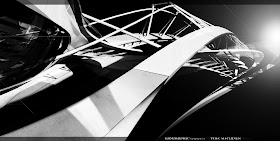A building is made up of other spaces within it that transform and change, even if its built form remains fixed. The idea of the mobility of building and within building is based on its transformation or metamorphosis function. Building is not only a space which we use, but it’s like an organism which grows through experience. However, the notion of time which is distinct from the notion of space has always been puzzling and perplexing to architects. Einstein’s notion of “space-time” and their central focus on the notion of event. It incorporates space-time and observer in a relational framework. Theory of Relativity proposes that events designated as space-like or space-time-like or time-like depending on their speed is always to be seen with reference to a self relative to another. Similarly, in architecture the spatial dimension is mundane if we don’t consider the experience part of it.
Timeless architecture embraces a different metaphysic and a different approach to architecture. It considers the space as a module for present and future. Everything which we design is in fragments which can transform and give a new identity to its existence.
Architecture has taken a new turn. It is no more a rigid, stationery discipline. The new high-tech buildings move and give a new meaning to its existence each time you experience it. The moving image is the medium that inherently combines space and time through sound, image, motion. The moving image has the potential to present memories, simultaneous events, and expectations in a fragmentation of time and space that is not linear. This presents us with the ability to create new multidisciplinary architectures that combine data, light, sound, motion, sensor technology, structure and location into an entirely new environment, potentially a "moving architecture".
In the case of moving or dynamic architecture where each spatial dimension depends on external entities, the observer needs to take all things in account to create an image to store in brane. If any of the entity modifies the brain will need to rectify the pre existed image by experience all the entities.


















